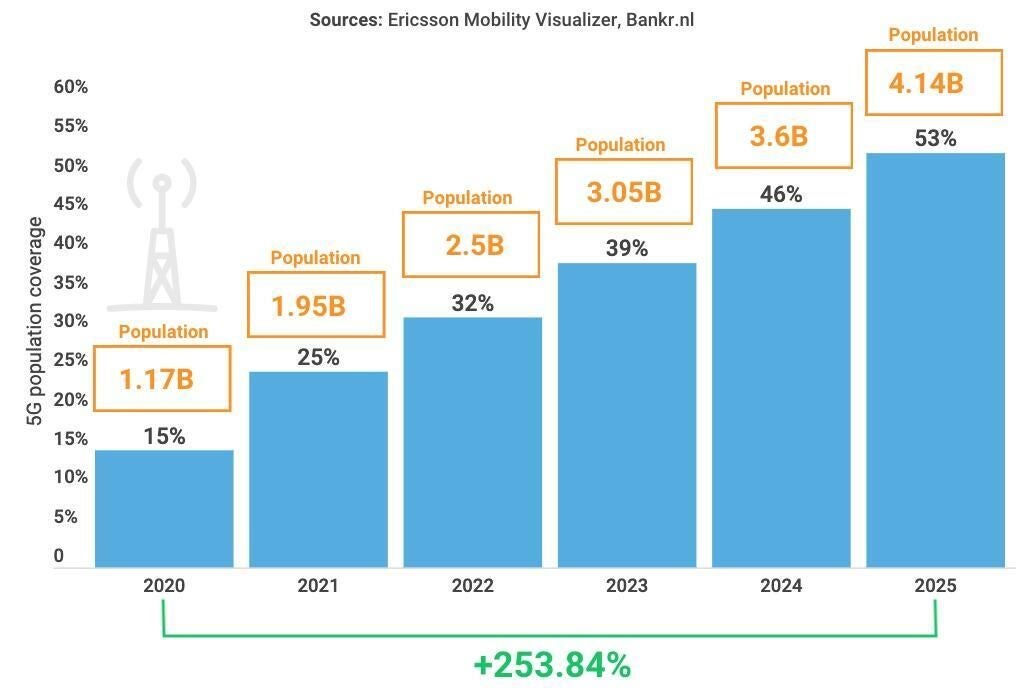
Image: Bankr
In four years, about 4.1 billion people will have access to 5G coverage, according to an analysis by Bankr. This is a growth of 254% by 2025.
Bankr used data on the installed base of Ericsson’s Radio Base Stations combined with the estimated coverage per station for each of six population density categories. In 2020, about 1.17 billion people had access to 5G, which is about 15% of the population. Bankr estimates that this number will double by 2022, with 2.5 billion people gaining access. By 2025, 4.41 billion people will be able to use 5G services representing 53% of the world population.
SEE: 5G: What it means for edge computing (ZDNet/TechRepublic special feature) | Download the free PDF version (TechRepublic)
The analysts note that a few regions in Asia, the US, and Europe are driving the expansion of 5G service. Asia is in the lead while the US is developing policies to make sure that the digital divide doesn’t get deeper as 5G expands.
Forrester predicts that nationwide 5G from major telecom networks in the US won’t be sufficient to meet demand and private 5G networks deployed by companies and developed by manufacturers like Ericsson, Huawei, and Nokia will fill the gap. In 2021, Forrester predicts, private 5G networks will be used for factory floor automation, AR/VR for remote inspection, surveillance, quality assurance, remote monitoring, predictive maintenance, and employee safety.
SEE: Research: How 5G will transform business (TechRepublic Premium)
5G installations slowed somewhat in 2020 due to the coronavirus pandemic. Gartner predicts that 5G investments will rebound somewhat in the new year and that the buildout of 5G network infrastructure will exceed LTE/4G in 2022. Kosei Takiishi, senior research director at Gartner, suggests that communications service providers will “gradually add standalone capabilities to their non-stand-alone 5G networks” and by 2023 “15% of CSPs worldwide will operate stand-alone 5G networks that do not rely on 4G network infrastructure.”
Global cybersecurity company Positive Technologies identified several potential vulnerabilities in 5G standalone networks that could result in denial of service for customers.
Researchers analyzed the security of the network architecture, interaction of network elements, and subscriber authentication and registration procedures in a report that outlines possible weaknesses.
SEE: 5G mobile networks: A cheat sheet (TechRepublic)
As Esther Shein reported for TechRepublic, business leaders plan to increase security spending on 5G services over the next year. A report from AT&T Cybersecurity found that 83% of respondents said web-based application attacks will be a challenge when implementing 5G. The report also listed data accessed by mobile endpoints, the need for more specific security policies, and a higher potential for DDoS attacks as other 5G security concerns.
SEE: Future of 5G: Projections, rollouts, use cases, and more (free PDF) (TechRepublic)






